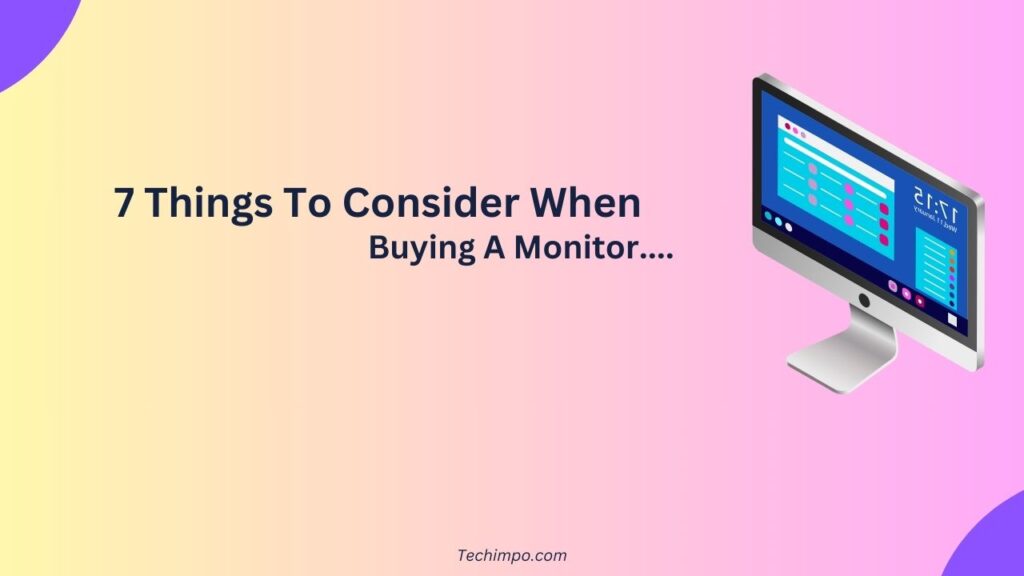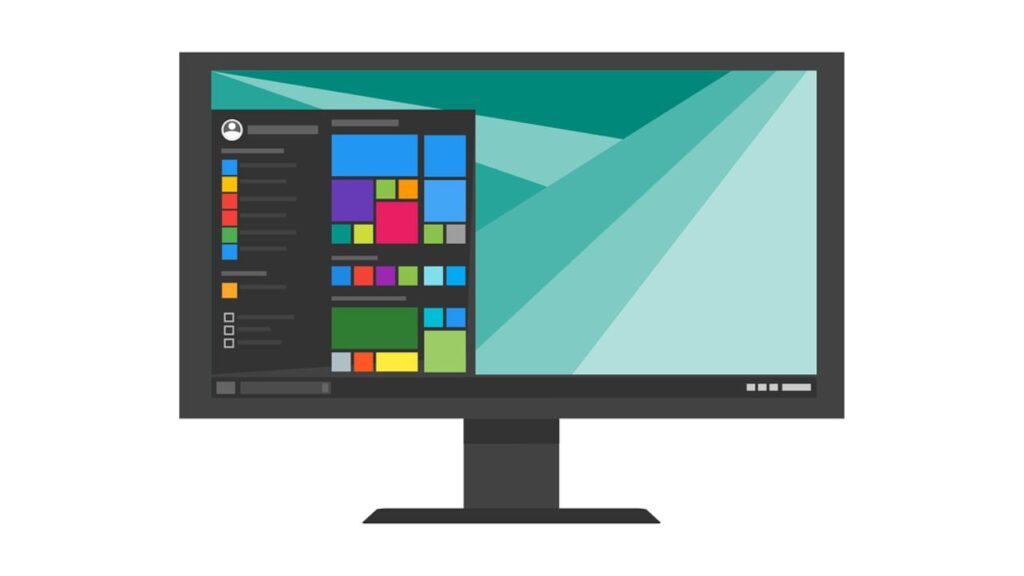With the plethora of available options, choosing the right monitor that can cater to your needs is overwhelming. Whether you need it for productivity, gaming, or creative work, there are different monitors with different features and technologies for different requirements.
The right model will have a significant impact on the computing experience you would have while using the monitor. So you need to buy the right one for yourself.
Now you must be wondering what to consider when buying a monitor, right? Keep on reading to educate yourself on this topic.
[Also Read: 10 Essential Questions to Ask When Buying a Laptop]
Things To Consider When Buying a Monitor
Below are the most crucial factors that you should consider when buying a new computer monitor:
1) Monitor Resolution
When it comes to the image quality of a computer monitor, the feature that is primarily responsible for that is the resolution of the monitor. So monitor resolution is one of the most important factors to consider when you are in the market to shop.
You will need to choose one from different models with different resolutions such as Full HD (1080p), Quad HD (1440p), 4K, 5K, and 8K resolutions. The decision should be based on your specific requirements, budget, and the hardware of your computer.
For general users needing general tasks to be performed on their computer, monitors with Full HD (1080p) resolution are fine and budget-friendly also.
Quad HD (1440p), on the other hand, offers more sharpness compared to Full HD (1080p) monitors, thus positioning themselves as a suitable option for more demanding tasks.
But if you are a gamer or a professional possessing more powerful system hardware, 4K monitors are ideal to cater to your needs demanding exceptional details. Further, for video editors, etc, higher resolution monitors like the ones with 5K and 8K ratings are also available to handle high-end creative tasks.
2) Refresh Rate
The refresh rate of a monitor determines the number of times the monitor updates or refreshes per second. So it’s also a crucial parameter to consider and it’s measured in Hertz (Hz).
Monitors with a 60Hz refresh rate are most commonly used for general tasks like general office work, web browsing, etc. But if you are someone who needs a monitor for gaming, a higher refresh rate such as 120Hz or 144Hz would be ideal for a better gaming experience.
Some competitive gamers significantly benefit by choosing monitors that offer refresh rates of 240Hz or even more. These monitors are even more responsive compared to 120Hz or 144Hz ones.
One important thing to keep in mind while deciding on the refresh rate is that a higher refresh rate would require you to have a powerful GPU also in your hardware.
3) Panel Type
There are various kinds of monitor panels including IPS, VA, and TN. Depending on what you prefer most among speed, color fidelity, and contrast, the panel type that would suit you the most can be chosen.
IPS panels are suitable for casual and professional users. They offer wide viewing angles and outstanding color accuracy. VA panels, on the other hand, offer excellent contrast as well as deeper blacks, thus establishing themselves as an ideal option for gaming and watching movies in darker environments.
But if you are someone whose priority is fast response time, monitors with TN panels would suit you the most. However, they don’t offer much color accuracy and viewing angles. These panels are perfect for competitive gaming.
4) Screen Size and Aspect Ratio

You should decide on the screen size of the monitor to buy based on the size of your workspace and the specific use you would have. In addition, you should also consider your size preferences.
On most general users’ desks, computer monitors with sizes of 24 or 27 inches are generally seen. These monitors are versatile and suitable for gaming and general tasks.
Some people opt for 4K resolution for better picture quality, so they require bigger screens such as ones with size of 32 inches. And, there are ultrawide monitors also which offer aspect ratios of 21:9 or 32:9.
Ultrawide monitors are best for those who intend to have immersive experiences or keep multiple windows open side-by-side. These models allow you to enjoy panoramic views in gaming.
5) Build Quality and Ergonomics
Some features, like build quality and ergonomics, don’t look like primary factors to consider when buying a monitor. But they do matter a lot and significantly influence the user’s comfort and overall experience.
With the aid of adjustable stands in monitors, it becomes possible to alter the height, swivel, or tilt. These adjustments add to the comfort of the viewing position, thus reducing strain.
Some models are VESA-compatible and can be mounted on your walls, thus offering great relief to those with space concerns. In addition, you should prefer models with thin bezels if you are going to have a multi-monitor setup.
6) Connectivity Options
Another one of the most important things to consider when buying a monitor is the connectivity options offered. These connectivity options determine whether the chosen monitor will be compatible with your devices. Moreover, these options impact overall versatility.
There are various ports to choose from such as HDMI 2.1, DisplayPort, and USB-C, which work as connectivity features in a monitor.
HDMI 2.1 offers support for high refresh rates (like 120Hz) and resolution (like 4K), which makes it suitable for gaming PCs and consoles.
Similarly, DisplayPort provides excellent bandwidth and offers support for variable refresh rates and high dynamic range. And, as far as the USB-C port is concerned, it’s like an all-in-one solution and allows you to connect laptops while charging them.
7) Primary Use Case
Last but not least on the list of key factors to consider when buying a monitor is to understand your primary use case. If you are a general user, a decent display quality and resolution would be sufficient for you.
But if you need the monitor for professional tasks like pro-level designing or content creation, a monitor offering high resolution and support for advanced standards such as HDR would be a perfect choice.
Similarly, gamers, for a smooth and enhanced gaming experience, prioritize less response time and a high refresh rate when choosing the monitor for their computing setup.
Conclusion
The key to choosing the computer monitor that would enhance your computing experience is to prioritize the features that align with your budget and needs. Understand your specific needs – whether you need the monitor for general use, productivity, or gaming.
Considering the key factors like refresh rate, resolution, connectivity, etc would help you end up with an informed buying decision.
[Also Read: How Does a Monitor Work? A Comprehensive Guide]




